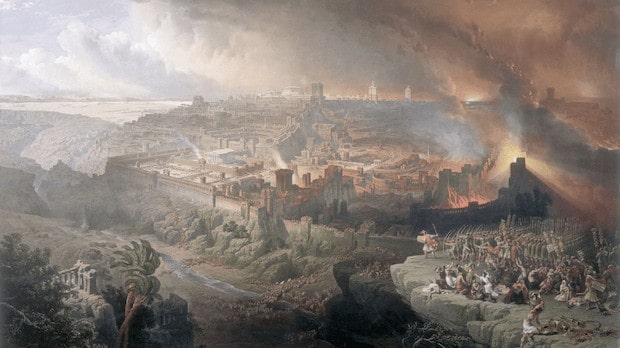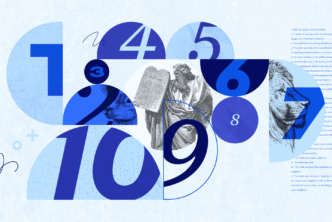There’s no shortage of advice on how to interpret the Bible. One maxim that I’ve already mentioned advises, “When the plain sense makes sense, seek no other sense.” I’ve heard it quoted when it comes to biblical prophecy—encouraging people to interpret literally, at face value. Although that sounds like good advice, some New Testament writers didn’t get the memo.
One of the most well-known examples of a non-literal reading appears in Acts 15 when the apostle James quotes Amos 9:11–12:
Acts 15:16–18
After this I will return, and I will rebuild
the tent of David that has fallen;
I will rebuild its ruins,
and I will restore it,
that the remnnt of mankind
may seek the Lord,
and all the Gentiles,
who are called by my name,
says the Lord,
who make these things
known from of old.
Amos 9:11–12
In that day I will rise up
the booth of David that is fallen
and repair its breaches,
and raise up its ruins
and rebuild it as in the days of old,
that that they may possess
the remnant of Edom
and all the nations
who are called by my name,
declares the LORD
who does this.
In the Amos prophecy, God promises to one day “raise up the booth of David and repair its breaches, and raise up its ruins, and rebuild it.” Hearing the language of repair and rebuilding, we might think of a physical structure. “Booth” (sukkah) is a word used for tents at the Feast of Booths (Lev 23:34). Reading literally, we might think that the tabernacle, still used in David’s day and brought into the temple after it was built by Solomon, might be the focus of the prophecy.
Many interpret Amos 9 this way, believing the passage describes the rebuilding of the temple in Jerusalem in the end times. The “possession” of Edom and the nations who are destined to call the Lord their God would seem to fit that context.
But Luke, the writer of Acts, doesn’t interpret the passage that way. He doesn’t take it “plainly” or literally. In Acts 15, he describes the fledgling Church gathering in Jerusalem to hear that Paul and Barnabas had taken the gospel to gentiles, who had embraced it. Peter and James came to their defense. To prove the momentous event had been prophesied in the Old Testament, James quoted Amos 9:11–12. James (and the writer, Luke) understood the language of building and repairing to refer to a person—the resurrected Jesus, the son of David. They also don’t refer to “the remnant of Edom” but instead “the remnant of mankind.”
James and Luke used the Septuagint, the Greek translation of the Old Testament. The Hebrew version of the prophecy had “Edom” (Hebrew ʾedom), but the Septuagint reads “mankind” (reading the Hebrew as ʾadam). The words share the same consonants but are otherwise entirely different.
The switch to “mankind” fits the occasion of this meeting as well as the ministry of Paul and Barnabas. The gentiles—all the nations of mankind, not just Israel—are now accepting the gospel. But that is not how the passage read in Hebrew. The interpretation by James and Luke is not a literal one, but an abstract or “spiritual” one, based on a different reading from a translation.
Did James and Luke misread the Bible, then? Not necessarily. The “remnant of Edom” could be considered an abstract reference to “non-elect” people: Remember that the Edomites were descendants of Esau (Gen 36:1), who surrendered his birthright (Gen 25). Therefore, the non-literal translation of “mankind” in the Septuagint version of Amos 9:11 is within the realm of accurate meaning.
Comparing these passages illustrates important lessons: Interpreting biblical prophecy cannot be distilled to a simple maxim, and everything cannot be taken literally. The New Testament shows us otherwise.
***
This article is excerpted from Dr. Heiser’s book The Bible Unfiltered. He’s taught many Mobile Ed courses, including Problems in Biblical Interpretation: Difficult Passages I.





